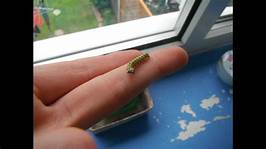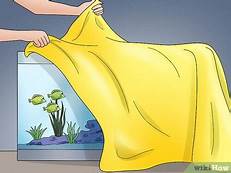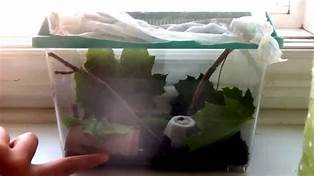How to Keep a Caterpillar as a Pet
Caterpillars are fascinating creatures that can make great pets for people of all ages. They are relatively easy to care for, and they can provide hours of entertainment as they grow and change. However, there are a few things you need to know before you bring a caterpillar home as a pet.

Choosing a Caterpillar
The first step is to choose the right caterpillar. Some caterpillars are easier to care for than others, and some are more likely to survive in captivity. Some common choices for pet caterpillars include:
- Monarch caterpillars
- Painted lady caterpillars
- Cabbage white caterpillars
- Black swallowtail caterpillars
- Spicebush swallowtail caterpillars
When choosing a caterpillar, look for one that is healthy and active. The caterpillar should not have any visible injuries or parasites. You should also choose a caterpillar that is the right size for your enclosure.
Creating a Habitat
Once you have chosen a caterpillar, you need to create a habitat for it. The habitat should be large enough for the caterpillar to move around comfortably, but not so large that it is difficult to clean. The habitat should also be well-ventilated and have a lid to prevent the caterpillar from escaping.
The bottom of the habitat should be lined with a layer of substrate, such as potting soil or vermiculite. The substrate should be kept moist, but not wet. You can also add some leaves or branches to the habitat for the caterpillar to climb on.
Feeding a Caterpillar
Caterpillars eat a variety of foods, depending on the species. Some caterpillars eat leaves, while others eat flowers or fruits. You can usually find information about the specific diet of your caterpillar online or in a book about caterpillars.
It is important to feed your caterpillar fresh food every day. You should also provide your caterpillar with a source of water, such as a shallow dish of water or a piece of wet sponge.
Caring for a Caterpillar
In addition to feeding and cleaning your caterpillar, you also need to provide it with the right temperature and humidity. Caterpillars are typically most comfortable in temperatures between 70 and 80 degrees Fahrenheit. They also need a humidity level of around 50%. You can use a thermometer and a hygrometer to monitor the temperature and humidity in your caterpillar's habitat.
Caterpillars are also susceptible to a variety of diseases and parasites. It is important to keep your caterpillar's habitat clean and to inspect it regularly for signs of illness. If you notice any signs of illness, such as lethargy, loss of appetite, or diarrhea, you should consult with a veterinarian.
Releasing a Caterpillar
When your caterpillar is fully grown, it will eventually form a chrysalis and turn into a butterfly or moth. Once the butterfly or moth has emerged from the chrysalis, you can release it into the wild. You can do this by placing it on a plant in your garden or by taking it to a nearby park or nature preserve.
Conclusion
Keeping a caterpillar as a pet can be a rewarding experience. Caterpillars are fascinating creatures that can teach you a lot about nature. By following the tips in this article, you can help your caterpillar thrive in captivity and enjoy watching it transform into a beautiful butterfly or moth.
Declaration: All article resources on this website, unless otherwise specified or labeled, are collected from online resources. If the content on this website infringes on the legitimate rights and interests of the original author, you can contact this website to delete it.






